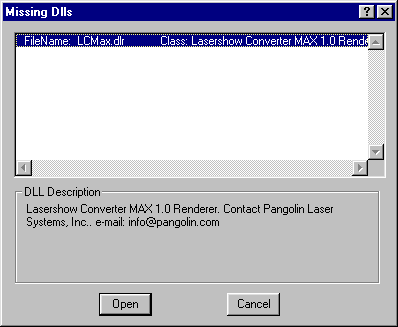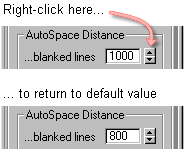Tools
Support
Pangolin Family of websites
Pangolin Laser Systems, Inc.
Kvant Lasers
Unity Lasers
ScannerMAX
Lasorb
Tools
Support
Pangolin Family of websites
Pangolin Laser Systems, Inc.
Kvant Lasers
Unity Lasers
ScannerMAX
Lasorb
You should have enough mesh faces to create detail. Lasershow Converter MAX uses the mesh faces to make the edges (line types). If there are not enough mesh faces, there won't be enough laser lines. For example, if you have a sphere with just 6 faces, it will look like a cube.
The more faces, the smoother your object(s) will look.
Flicker should not be a significant problem. If your scene has many objects, Lasershow Converter MAX may render lots of points. But in all of the scenes that Pangolin has seen so far, this happens very rarely. Since Lasershow Converter MAX only renders the most-relevant lines, things have a way of working themselves out so that there really aren't that many points.
The Undo feature in 3ds Max will undo everything with respect to 3ds Max tools and objects, and also any changes made in the Lasershow Converter MAX modifier. However, it will not undo changes to line-specific or color-specific options set with the Lasershow Converter MAX utility plug-in.
Yes, you can easily return to the default for any numeric value; click here1) for instructions. To return to defaults for an object, it may be easiest to use the Object Quick-Setup panel, to select a default object type.
For non-numeric values, such as color or path preferences, check this help file. Most pictures of the various control panels show the default values.
You need to specify Lightshading as the Line Color in either the Render Settings or the Utility plug-in or Modifier plug-in.
This can be caused if an object is scaled differently in one dimension than in another. To check this, select the object, click on Scale, then select Tools/Transform Type-In. If you see the X, Y or Z value as negative, then this is likely the cause of the problem.
To fix this, select the Utility panel. Click on Reset XForm, then select the object and click on Reset Selected. The object may flip around and require a little extra work to be put back into position.
A NURBS surface consists of a series of patches. In Lasershow Converter MAX, patches are first changed to a triangular mesh before being further processed. Any NURBS patch edges that aren't joined to another patch will create a hard edge, which Lasershow Converter MAX will convert to a visible line.
On a NURBS sphere, for example, there is just one patch which is wrapped into a sphere. Two edges of the patch are compressed into two points at the poles. The other two edges meet at an “international date line” that runs from pole-to-pole. Lasershow Designer MAX sees these as “hard edges”, that will form a visible line.
If, however, the edges are welded together, then there will be a single mesh object that has no hard edges. To weld the edges, first select the NURBS object. In the Modify panel, click on Edit Mesh. Select all the vertices, then click on Selected in the Weld section. This will weld all the NURBS patch vertices, so they create a single solid mesh.
Lasershow Converter MAX is not a Material Renderer. You will need to assign the Default Scanline Renderer as the Material Renderer. You do this by "unlocking" the selection between the renderers in the Render Scene dialog box in 3ds Max.
When a 3ds Max scene is saved, it remembers that Lasershow Converter MAX is the renderer. When the scene is loaded on a machine without the Lasershow Converter MAX plug-in, 3ds Max will display a message that it is missing the plug-in. You can safely ignore this message.

